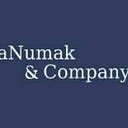Relational and Non–Relational (NoSQL) Database Systems
NoSQL databases are designed explicitly for predetermined data models and have flexible schemas for building up–to–date applications. As a result, NoSQL databases have been widely accepted for their ease of development, functionality, and performance at scale.
Various data models are used in NoSQL databases to access and manage data. Such databases are specially optimized for applications that require large throughput, low latency, and flexible data models. These requirements are met by easing some of the data consistency constraints of other databases.
NoSQL databases are ideal for many modern mobile, web, and gaming applications that require flexible, scalable, high–performance, and highly available databases to deliver great user experiences.
Flexibility: NoSQL often provides faster, flexible schemas. Thanks to its flexible data model, NoSQL databases are ideal for semi–structured and unstructured data.
Scalability: NoSQL databases are often designed to be scaled out using distributed hardware clusters rather than being expensive and scaleable. Some cloud providers perform these processes in the background.
High Performance: NoSQL databases are optimized for specific data models and access patterns, enabling higher performance.
High Functionality: NoSQL databases provide highly functional APIs and data types explicitly designed for data models.
What Are the Types of NoSQL Databases
Key–Value: Key–value databases allow horizontal scaling at scales that other databases cannot reach. Use cases such as gaming, advertising technology, and IoT are particularly suitable for the data model.
Document: For developers, data is often represented in application code by an object or a JSON–like a document. Document databases make it easy for developers to store and query data in a database using the same paper they use in their application code. Thanks to the flexible, semi-structured, and hierarchical structure of documents and document databases, developers can develop according to the requirements of the applications. This document model; is instrumental in combination with catalogs, user profiles, and content management systems.
Graph: A graph database is to make it easy to build and run applications that work with highly connected datasets. Everyday use cases for graph databases include social networks, recommendation engines, fraud detection, and knowledge graphs.
Search: Many applications create logs to help software developers troubleshoot problems.
Click for more information on this topic;
